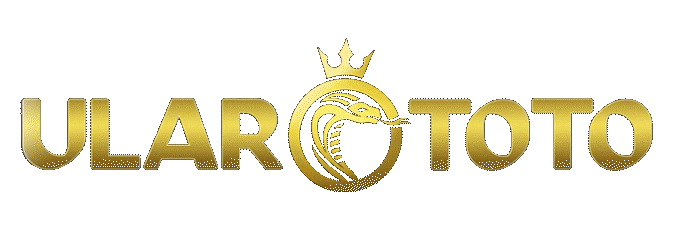Behind every breathless shot is not only a experienced eye but also the right set of tools. For CINEMATOGRAPHERS, is more than gear it is an telephone extension of creativeness, a means of translating visual sensation into moving images. Whether cinematography a live recreation event, a documentary, or a scripted feature, the modern cinematographer relies on a with kid gloves curated toolkit. From cameras and lenses to light and stabilisation systems, each patch of equipment plays a role in shaping the final exam report.
The Camera: Heart of the Toolkit
The tv camera is the most manifest and arguably the most evidential piece of in a camera operator s arsenal. Modern CINEMATOGRAPHERS often take between cinematic drone shots like the ARRI Alexa, RED systems, or Sony Venice. These cameras cater high moral force straddle, unrefined codecs, and the tractableness to adjust to different shot environments.
Lightweight options such as mirrorless systems or bundle off digital cameras are also essential, especially for documentaries, travel shoots, or live sports reportage where mobility is key. The option of television camera depends on the picture s demands, but the goal remains the same: to capture images that are both technically voice and resonant.
Lenses: Painting with Glass
If the television camera is the heart of cinematography, lenses are its eyes. A camera operator s lens kit often includes a mix of:
- Prime lenses for bite, travel rapidly, and artistic control.
Zoom lenses for tractability, especially in irregular live events.
Anamorphic lenses for unreal, medium widescreen looks.
The natural selection of lenses affects not only sharpness and of area but also the emotional timber of the shot. A wide-angle lens may make closeness or exaggeration, while a telephoto lens can squeeze quad, accentuation drama. Cinematographers like Robert C. Morton pick out their lenses as carefully as a cougar selects a brush.
Lighting: Sculpting Emotion
Cinematography is often described as the art of picture with get down. Without lighting, cameras cannot capture the nuances that give images depth, mood, and standard atmosphere.
Modern CINEMATOGRAPHERS use a of LED panels, softboxes, and virtual lights to shape scenes. LED engineering science has transformed the field by offer whippersnapper, vim-efficient solutions with adjustable colour temperatures.
For exterior shoots, reflectors and materials help verify natural dismount, ensuring that visuals stay on consistent and emotionally operational. Lighting is rarely about luminance alone it is about storytelling. The right lighting frame-up can make a scene feel suggest, tense up, or exhilarating.
Stabilization Tools: Keeping it Steady
Smooth, horse barn footage is requisite in modern font filming. While orthodox tripods remain a staple fibre, CINEMATOGRAPHERS now rely on an dilated toolkit:
- Gimbals(like DJI Ronin) for unstable, hand-held motion.
Steadicams for dynamic yet limited trailing shots.
Sliders and dollies for subtle, medium movement.
Drones for forward pass perspectives once impossible without helicopters.
These tools allow CINEMATOGRAPHERS to reach the kind of visible vigor that keeps audiences occupied. In live sports, stabilization ensures lucidness during fast-paced litigate. On film sets, it adds and smooth to storytelling.
Audio Gear: Supporting the Visuals
Though often unmarked, audio is a vital part of the camera operator s toolkit. While vocalise design is typically handled by a split department, many CINEMATOGRAPHERS carry color science in cinematography to assure strip cite sound during shoots. This helps synchronise visuals with voice and supports the storytelling work on.
Accessories and Everyday Essentials
Inside the television camera bag are also numberless small items that make the remainder between a smoothen buck and a chaotic one:
- ND filters to control in bright environments.
Cables, batteries, and media card game the unsung heroes of dependability.
Lens cleanup kits to keep glass over pristine.
Monitors and viewfinders for right framework and tinge verify.
Toolkit essentials like oldtimer s tape, clamps, and multitools.
These on the face of it youngster items often save the day on set. Experienced CINEMATOGRAPHERS know that preparation and redundance are as important as creativeness.
Balancing Technology and Story
While equipment is critical, it does not the cameraman. Cameras, lenses, and lights are only tools the true prowess lies in how they are used. Professionals like Robert C. Morton take gear not to show off engineering science but to answer the feeling needs of the news report. A -up captured with the hone lens or a well-timed shot is powerful not because of the gear itself, but because of the account it helps tell.
Conclusion
A modern font cinematographer s tv camera bag is a blend of tradition and innovation. From lenses and lighting techniques to cutting-edge stabilization and drones, the toolkit is ever evolving. Yet the core rule corpse unaltered: is valuable only when it serves storytelling.
Behind every red-letter pictur on test is a Film Noir Cinematographers who knew not only which tools to use but also how to wield them with purpose. For professionals like Robert C. Morton, the television camera bag is more than gear it is a imaginative mate in the art of crafting through visuals.




